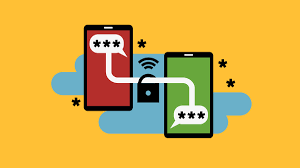Phishing and spamming consumers with irrelevant, unwelcome advertisements or false information are ways that spambots make money through email. Spam bots that send unsolicited emails are prevalent on almost every social media site. Keep reading to find out who makes the greatest email spam bot (generator), how to create one, and how to use it.
Email Spam Bot
Spam is an abbreviation for “spambot,” an automated system that sends users unsolicited communications. “Spam” refers to unsolicited commercial electronic mail that the recipient has not asked to receive. There is a wide variety of email spam. Email spam, at its most fundamental, is just unsolicited commercial messages that arrive in a user’s inbox from various merchants or services.
The scalability and automated nature of spambots allow them to deliver far more email spam than any one person could generate. Spambots can gather email addresses, construct false accounts, and then send out emails using those accounts. Email spam is just one kind of spambot. Spambots have become increasingly common in recent years, flooding online comment sections, social media accounts, and forums with unwanted messages.
Types of Spam Bots
Hackers keep one step ahead of the problem by regularly updating the innumerable pieces of software that function as spam bots. Nevertheless, we’ll go over some of the most common kinds of spam bots below, including those that target websites, social media, and email.
#1. Email Spam Bots
It may be rather challenging for individuals and businesses to keep up with the enormous volume of messages sent out by email spam bots, and this can lead to email systems being overwhelmed. In most cases, their method of operation involves collecting email addresses from various online sources and subsequently sending spam messages.
While each email spam bot is unique, typical strategies include:
- The practice of spoofing
- Ponzi schemes
- Spread of malware advertisements
- Influence tactics that target social groups
Cybercriminals may bypass the first stage and use email spam bots to send harmful emails; they may even seek to purchase huge databases of email addresses from the dark web.
#2. Websites
Spam bots can compromise a website by attacking its front end and posting numerous links or comments in forums at high speeds. Furthermore, they might be able to hijack the site’s legal automated chatbots.
Spam emails from websites often include harmful content that can infect devices or networks with malware or phishing scams. The typical goals of website spam bots are:
- Inserting links
- Creating False Ads
- Ponzi schemes
- Spread of malware
- Online Communities
As the number of social media channels has increased over the last 20 years, so too has the prevalence of spam bots. In most cases, they will establish false profiles with the express purpose of posting spam, phishing, or links to harmful websites in the form of messages, comments, or advertisements.
But with credential stuffing, they can also hijack existing user accounts and do things like spam the targeted social media platform, access the user’s profile, and maybe even their contacts’ personal information.
How Spambots Works
The intended recipient of the spam (email, comments, social media posts, etc.) determines the spambot’s mode of operation.
The discovery and harvesting phase is the initial stage for the majority of spambots. Here, the spambot operator compiles a list of intended targets, which may include email addresses, online discussion groups, or social media platforms. One method of gathering targets is scraping, which involves searching for publicly available information such as email addresses, website comments, and forum posts.
It is possible to utilize a valid email address for non-malicious email spam, such as unwanted marketing. Spambots frequently employ fictitious accounts to email a predetermined list with harmful spam. All it takes is a mail server and a list of people to send spam to.
Spambots usually use compromised accounts or establish new ones to post false comments on online forums and social media. After creating the fictitious account, the spambot begins to post comments and messages under it. A human user can configure the spambot to transmit specific messages, but an increasing trend is to employ AI to help develop spambot messages and send them to certain areas.
How to Identify a Spambot
The following are some of the telltale signs of a spam message or post, in addition to the more apparent ones, such as the presence of inaccurate or misleading information:
- Time (or frequency). Compared to a human, a spambot is able to post messages at a higher rate. An early warning sign of spambot activity may be a large number of messages delivered simultaneously.
- The language. The style and grammar of a human writer are frequently absent from spambot communications.
- Email address that is not real. The use of a fictitious email address may indicate the presence of spambots.
- internet protocol number. Another way to spot suspicious behavior is by looking for frequent use of the same IP addresses from the same places by spambots.
How to Protect Against Spambots
There is an abundance of antispam technology accessible to defend email from spambots. Web security gateway technologies, email clients with built-in spam detectors, and mail servers with integrated spam detectors are all examples of technologies that attempt to automatically identify and filter spam communications.
Several methods exist for preventing spambots from invading online comment sections and social media platforms, such as:
- A Captcha. Using a CAPTCHA is a common way to identify automated software on websites, and it works for both comments and logins.
- Spam filters for online discussion forums. You can filter comment spam using a variety of vendor solutions. For instance, WordPress’s Akismet plugin prevents spam comments.
- Declaration of intent (DOI). Spambots frequently attempt to register new accounts so they can comment on other people’s posts. To verify a new account or post, the COI sends a challenge to the user’s email or phone number.
- Listed spambots. An organization can restrict risk and block spambots by using compiled listings of known spambot locations. Both the Spamhaus Project and the Composite Blocking List are extremely famous directories of known spammers.
- A Web Application Firewall (WAF). Using WAF and deploying it helps prevent spambots. To detect possibly bot-like behavior, several up-to-date WAFs use bot-detection technology.
Email Spam Bot Generator
Giving up your email address to random businesses or websites puts you at risk of receiving annoying sales emails, newsletters you didn’t want, mailing list messages, and spam. An email spam bot generator, however, can help you avoid internet dangers and keep your mailbox secure. To avoid having your website infiltrated by email spam bots and to safeguard your privacy, you can create a temporary email account.
As a result, before you start participating in online communities like wikis, chat rooms, file-sharing services, and forum posts, be sure you have a disposable email address system in place. For the simple reason that Temp-Mail.org will never sell or divulge your true identity to third parties to prevent spam,. Furthermore, while an email spam bot generator grants you access to the internet, it also poses a threat since identity thieves will begin bombarding you with spam to steal your details. Alternatively, you can avoid danger by using the email spam bot generator.
Reasons Why an Email Spam Bot Generator Is Important
A disposable email address functions similarly to a regular address in terms of receiving mail. You can create a new phony email account and use it for as long as you like with some of these tools, and some of them even let you send messages out. You and your business’s email accounts will be safe and secure using these tools since they generate valid, usable email addresses.
#1. Confidentiality.
Signing up for services, receiving confirmation emails, submitting forms, and downloading files are just a few examples of the many online actions that require a valid email. However, providing a real address isn’t without its risks, as some sites harvest personal data to sell or share it with third parties. In such cases, it is best to use a disposable email to conceal your actual address.
#2. Safety
Sharing your work and personal email address with strangers might not be the wisest move. Online dating, anonymous forums, and classified advertisements are just a few examples of untrustworthy websites that could put you at risk. One way to ensure your safety is to use a burner email.
#3. Tests
For tasks involving specific types of technology, a fake email generator is an invaluable tool. To test and debug website features, client signups, downloads, and other tasks related to development and quality assurance, a temporary email account is necessary. You can maintain order in your primary inbox by using a disposable email.
#4. Spam
Spam will quickly pile up at an email address you share with everyone. When you receive an excessive number of spam emails, it can cause email overload, which in turn makes it difficult to complete your work and can even have negative effects on your mental health. So, to avoid spam at your real address, use a throwaway email account when visiting questionable websites.
#5. Arrangement
Even with spam filters, managing a single inbox that handles everything will be a challenge. It is challenging to reliably get through all of your communications every day and attain inbox zero when the average inbox receives 126 messages per day. On top of that, if you use a disposable email account for junk mail, you may keep your primary inbox more organized.
Are Email Spam Bots Illegal?
Although spambots may not technically violate any laws, the botmasters who employ them for illicit activities might face legal consequences.
Is It Illegal to Spam Someones Email?
In most circumstances, spamming is prohibited and can result in a fine. However, since the spammer is often not identifiable or claims to have authority to send the emails to each recipient, nothing generally happens.
Are Spam Bots Bad?
You don’t want spam bots hurting your company. Bots that harvest email addresses for spam can deluge your system, insert false or invalid addresses into your database, distort your email statistics, steal resources, take over your forms, lower your engagement and rating, and ruin the experience for your consumers.
Can You Go to Jail for Using Bots?
How well your spam filters work and how advanced your mail provider’s anti-spam technology are two factors that determine how effective mail bait will be. It is sufficient if your mailbox or service manages to withstand the deluge of emails. In that case, you’re free to go with an alternate. If you commit an internet scam, you could face jail time.
Can I Sue Someone for Spamming My Email?
Individuals are unable to do so, to put it briefly. People who have gotten spam emails do not have the legal right to sue under the CAN-SPAM Act.
What Is the Penalty for Spam Emails?
Noncompliance can result in expensive penalties of up to $50,120 for each email that violates the CAN-SPAM Act.
- The Top 11+SMALL BUSINESS EMAIL HOSTING Services & Reviews
- How To Find Hidden Comments on Facebook
- 15 Best Customer Retention Strategies That Increases Profits (guide)
- EMAIL SPAM BOT: Top Spam Bots & How to Make an Email Bot






